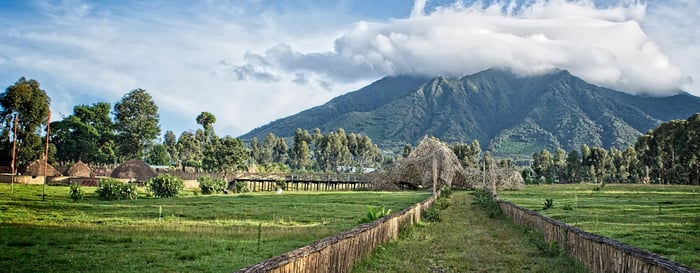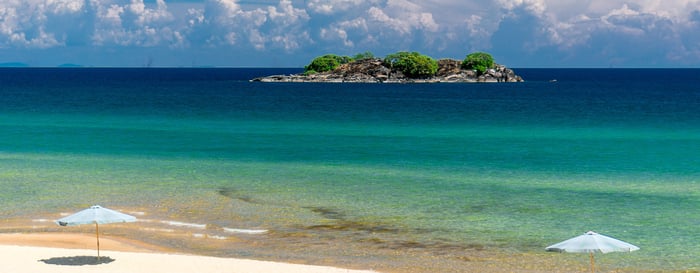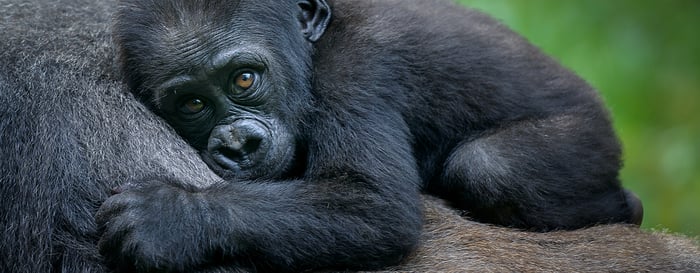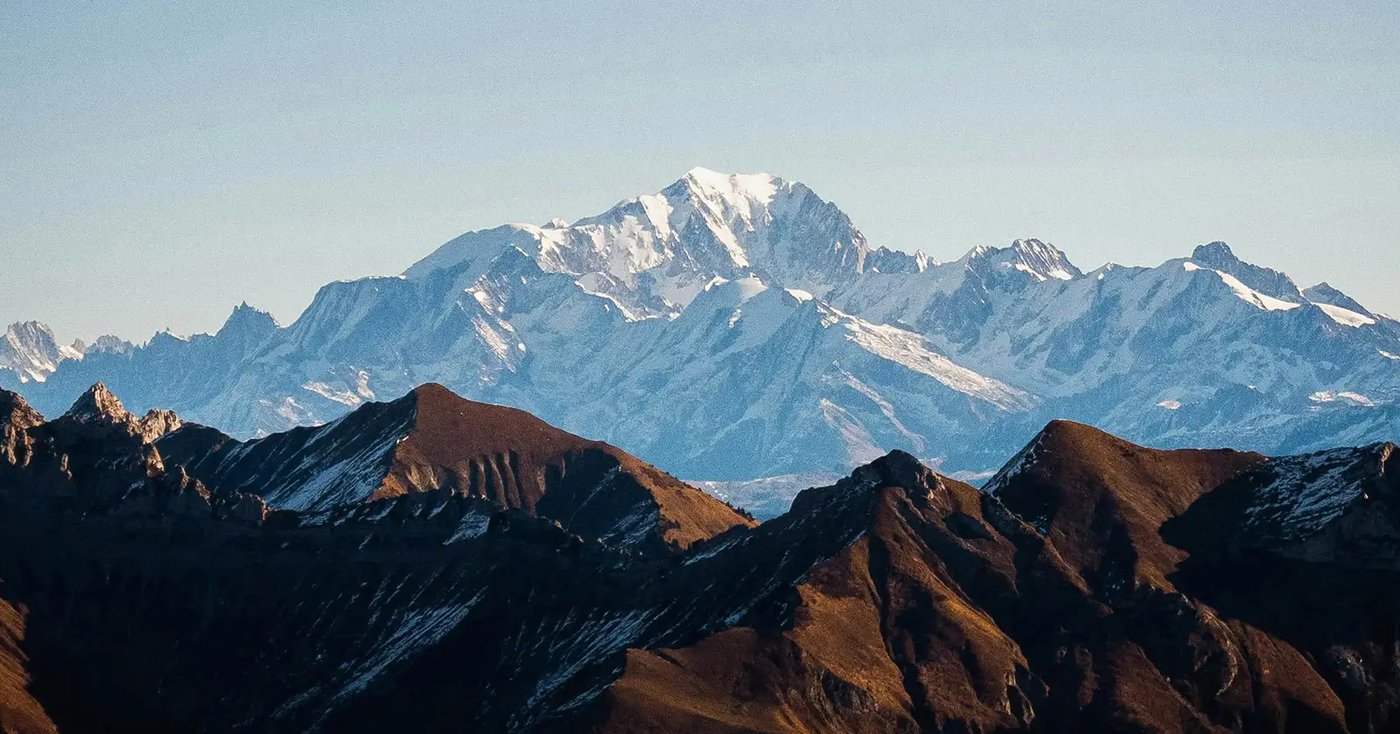The wind buffeted the tent, threatening to tear us from the roof of the car and dump us in the desert.
‘Are you sure it’s safe?’ mumbled my girlfriend.
I hugged her a little closer in the sleeping bag by way of silent comfort, because, to be honest, I wasn’t.
Towards morning the wind dropped and I was down the ladder with the eagerness of a child. The disturbed night was swiftly forgotten as I scrambled across rocks to watch day break over the stark beauty of Spitzkoppe; a group of soaring granite peaks carved over 100 million years by the gusts that almost usurped us from our sleeping quarters.
Namibia is one of the best African destinations for a self-drive adventure: it’s politically stable and English is widely spoken. It’s also one of the world’s most sparsely populated countries, larger than Turkey with only two million people. Australia is more congested.
A four-wheel drive vehicle is not essential, but we opted for one, for the excitement of being able to drive and stay almost anywhere. Although the truck was fully-equipped we planned to use the fridge and wine glasses more than the spade and tow rope for our Namibian adventure.
The day before we’d zipped along salt-scoured tarmac next to the Skeleton Coast, the western edge of the Namib Desert, named for the proliferation of whale and seal bones that once littered the shore. Nowadays the annual seal cull leaves nothing behind. Just north of Henties Bay we gawped at the Zeila, a South African trawler that broke loose while being towed to India for scrap. The stranded ship is slowly disintegrating; a surf-battered nesting site for cormorants.
We set off from Spitzkoppe, electrified by our desert camping experience. The road was bumpy and fun to drive; mile after mile of uninhabited scrubland, dipping in and out of dried up riverbeds.
The main routes in Namibia are paved but many roads are dirt or gravel, maintained by monstrous graders that chug up and down sporadically. With few cars outside the capital, Windhoek, the main danger is losing your concentration. It’s not uncommon for amateur rally drivers to end up in a ditch.
As we were taking in the breathtaking view. I heard a pop and the steering went slushy. We had a puncture. They say adversity is a bonding experience but when changing the tyre of an unfamiliar vehicle under a baking sun, I’d swap bonding for feuding. Needless to say, no one was left behind.
Brandberg Nature Reserve is home to Namibia’s highest mountain and an almost unique herds of elephants. Only here and in Mali has Loxodonta adapted to live in such arid conditions – with larger feet and smaller bodies than their savannah-dwelling cousins.
The elephants proved elusive, but a prize that couldn’t hide was the ancient cave paintings, the most famous of which is known as the White Lady, reached after a 40-minute hike that would have been more pleasurable had I not worn flimsy sandals. Approximately 2,000-years-old, the artwork was created by the San, hunter-gatherers who have inhabited Southern Africa for at least 40,000 years.
The following day’s drive was long and we arrived hot and dusty at the gate to Etosha National Park – the jewel in the crown of Namibia’s tourism industry and, at 20,000 km2, one of the largest game reserves in the world (8,000 km2 bigger than the Serengeti).
June is winter in Namibia and a good time to visit Etosha. It’s the dry season, best for animal spotting, but before the main rush starts in July. The man at the gate offered some encouragement.
‘Take lots of photos. The waterholes are great right now.’
I explained my camera had been destroyed when I ran (fell) down a dune earlier in the trip.
‘Ah – then you must steal with your eyes.’
Etosha was first designated a game reserve by German colonialists in 1907. The wildlife was almost wiped out by drought and war in the late 70s and early 80s and, although the animal populations have bounced back, poaching remains a serious problem with ivory smugglers earning thousands of dollars per kilo.


We made it to our camp, where as a treat we had booked a chalet with views of the floodlit waterhole. After a dip in the pool and dinner we retired for evening rush hour, beer in hand. Within minutes of taking our seats 30 elephants appeared to slake their thirst.
Sometime later two black rhinos entered stage left, drank, and began a strange courtship ritual. The male lowered his horn to the dirt and approached the female again and again but was always rebuffed. This is a critically-endangered species, with around 5,000 individuals remaining both in the wild and captivity, and a privilege to behold. We ate breakfast counting zebras as the sun rose then drove from waterhole to waterhole to enjoy the show. Binoculars upgraded our vision from pickpocketing to full-on bank robbery. We saw large concentrations of springboks, zebras and oryx driven by the dry conditions to share the few watering spots. Two elephants fought metres from our car and seven lions panted in the shade of spiky bushes.
The Big Five top most people’s list for African game viewing but my favourite was the giraffe; humble yet gloriously bizarre. Watching a huge male, legs splayed inelegantly to drink, was our final thrill before setting a course for the airport and an unwanted flight home.
The San called Namibia ‘the land God made in anger’ but it’s with fondness I recall the dazzling displays of landscape, light and fauna. Watching the world awake has always felt to me like a subversive act, as if the indigo hours before dawn are forbidden territory. In the vast spaces of South West Africa the rewards for trespassing are simply too great to resist. Prepare to be bewitched by Namibia, and expect some early starts.
Luxury Adventure in Rwanda
Rwanda Volcanoes National Park
-
The architecture, museums and restaurants of Kigali
-
Nature drives looking for elephant, zebra, giraffe and buffalo
-
Track mountain Gorillas in Volcanoes National Park
-
Spot colobus monkeys and chimpanzees in Nyungwe Forest National Park
-
Hike to crater lake on Mount Bisoke
Northern Malawi Adventure
-
See abundant birdlife and reintroduced elephants at Nkhotakota
-
Go trekking and mountain biking around the great plateau at Nyika
-
Relax and unwind on the pristine beaches of Likoma Island
-
Experience river, 4WD, and walking safaris to see Malawian wildlife
-
Enjoy a variety of watersports in freshwater Lake Malawi
Uganda Primate Safari
-
Observe family groups of wild chimpanzees in Kibale National Park, Uganda
-
See a huge diversity of primates including the rare L’Hoest’s monkey
-
Hike around stunning volcanic crater lakes
-
Experience two family gorilla groups in Bwindi Impenetrable NP
-
Spot rare birds and butterflies in Bigodi Wetland Sanctuary in Africa





